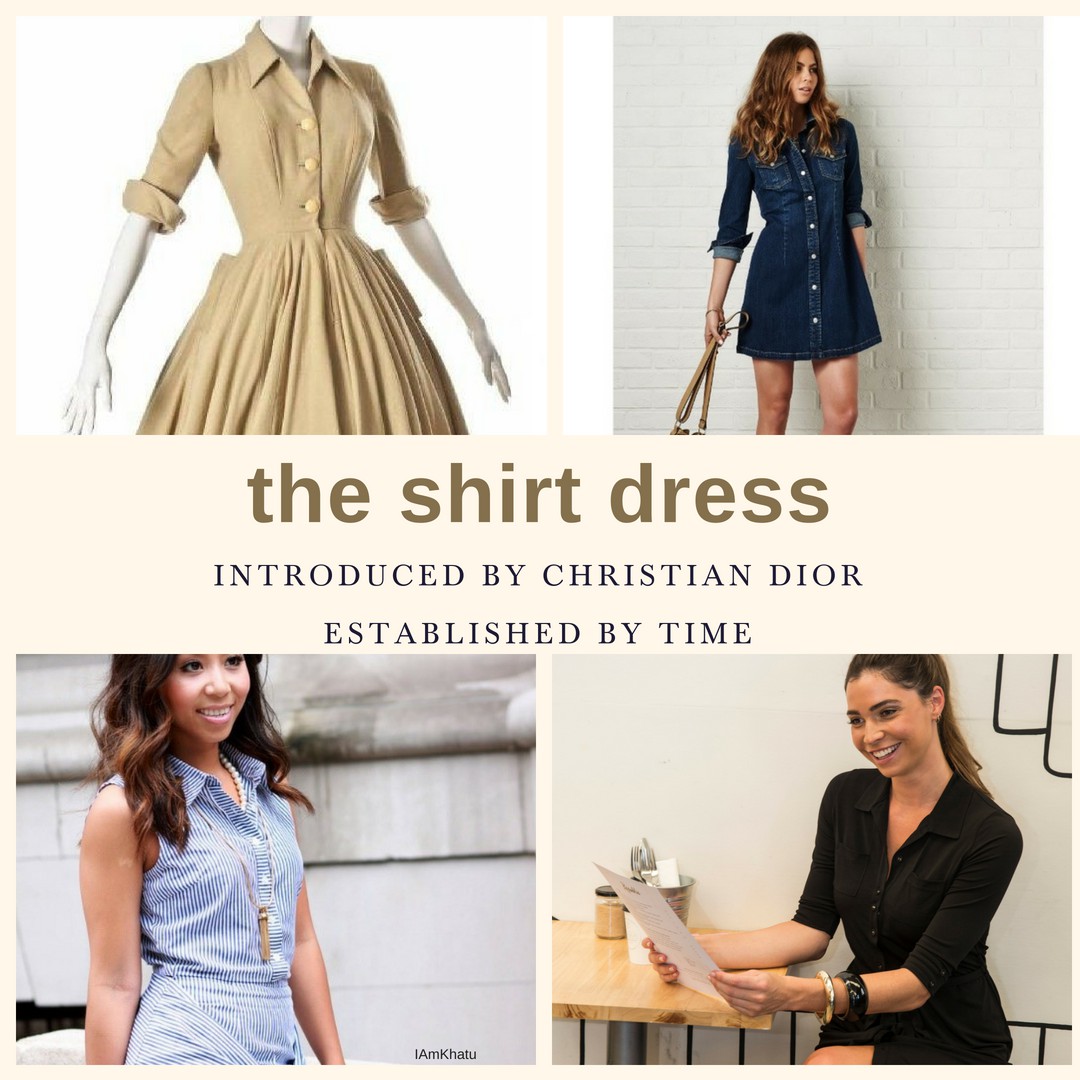The shirt dress is that most weird fashion item. It shouldn’t really be a thing – it’s not a shirt or a dress but a strange hybrid of both. And yet the shirt dress seems to be one of those staples that never seems to be on trend, or out of trend. It is just there. But it is something of an elusive item to wear well and has frequently been worn wrong. So, what is it about this constant companion of the fashion world that makes it able to weather the sands of time, whilst never quite hitting the big time?
Below are seven different styles of shirt dress, each of which epitomizes a particular decade of style. We’ll take a look at when each should or could be worn, and hopefully finally come to understand why this fashion try-hard, rather than fashion icon has lasted, when so many styles have failed.
1950s Style
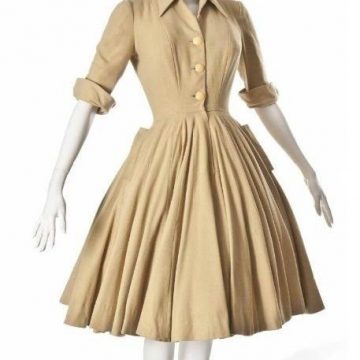
The original shirt dress was championed by Christian Dior as part of his “New Look” collection. This beautiful dress is somewhat multiplicitous, allowing woman to present themselves as feminine, whilst mimicking that previously all-male fiefdom of the button-up shirt. The beautifully full skirt and gathered waist was very-much in keeping with the tiny waists and curvy hips that were so desired at the time. Think Raquel Welch, Brigitte Bardot or Elizabeth Taylor.
This style of shirt dress works very well with curvier ladies. I personally love it on me as it creates the illusion of a waist. If I ran a bit more I might have more of a waist, but until then….
The style is most suitable for daywear, although with a shorter cap sleeve, and some statement accessories and shoes, you wouldn’t look out of place at the most best of fine-dining restaurants. So, get your 1950s style on, and rock the original shirt dress.
1960s Style
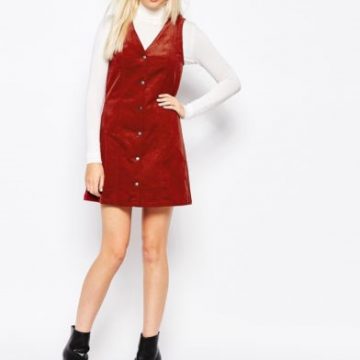 In the time of flower power and free love, the shirt dress still found it’s place. Moving away from the full skirts, towards showing tantalizingly long legs, came the button-up pinafore dress. Often in thicker materials, like cord, or denim, and with either the A-line shape, or a more straight skirt, the pinafore dress of the 1960s took the shirt dress to another generation. Whilst the 1950s style could be worn across multiple age groups, this style is generally more fitting to those think that Mary Poppins Returns was the first film to coin the phrase “supercalifragilisticexpialidocious”. The A Line is very flattering to lots of different body shapes, but be careful that wearing this pinafore dress doesn’t make you look like you are constantly in search of the nearest ‘Back to School Trivia night”.
In the time of flower power and free love, the shirt dress still found it’s place. Moving away from the full skirts, towards showing tantalizingly long legs, came the button-up pinafore dress. Often in thicker materials, like cord, or denim, and with either the A-line shape, or a more straight skirt, the pinafore dress of the 1960s took the shirt dress to another generation. Whilst the 1950s style could be worn across multiple age groups, this style is generally more fitting to those think that Mary Poppins Returns was the first film to coin the phrase “supercalifragilisticexpialidocious”. The A Line is very flattering to lots of different body shapes, but be careful that wearing this pinafore dress doesn’t make you look like you are constantly in search of the nearest ‘Back to School Trivia night”.
1970s Style
The 1970s shirt dress was like a its predecessors crossbred child, with a tailored and fitted waist a la 1950s, but with a thigh-skimming 1960s glamour. 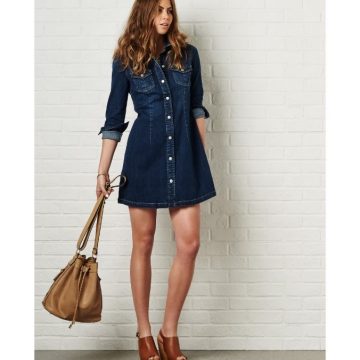 What often stood this era’s dress apart, as was true of much of the attire of this decade was not so much the shape, but more the fabric. Think paisley print, bold colours that were often eye-wateringly clashing. The 1970s also saw the separation of shirt dress style across generations. For the more senior fashionistas, the shirt dress resembled the original 1950s version, although the skirts were not as full, and were often made from a much softer material, with considerably brighter colours. For the burgeoning trend-setters, the style was less structured, and accessories were kept to a minimum, given the often-loud fabric choice.
What often stood this era’s dress apart, as was true of much of the attire of this decade was not so much the shape, but more the fabric. Think paisley print, bold colours that were often eye-wateringly clashing. The 1970s also saw the separation of shirt dress style across generations. For the more senior fashionistas, the shirt dress resembled the original 1950s version, although the skirts were not as full, and were often made from a much softer material, with considerably brighter colours. For the burgeoning trend-setters, the style was less structured, and accessories were kept to a minimum, given the often-loud fabric choice.
Both 1970s styles are frequently seen today, albeit often in less hoary shades. They are generally more of a day dress, rather than an evening option, although this can be influenced by your chosen shoe. Wear with a chunky heel to dress up for a day with the girls, or with some comfortable sneakers to loaf around town.
1980s Style
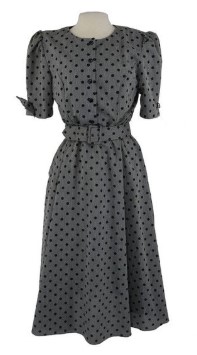 The 1980s. What a decade for fashion. Or something. The shirt dress was less seen during the 1980s, a decade typified with screaming individuality of style, and everyone trying to outdo each other with flamboyancy and frizz. From Madonna to Margaret Thatcher on opposing ends of the style spectrum, women could choose their power person to emulate. Not that the shirt dress disappeared, but like many items in the 1980s, it became both a structured and unstructured beast; the shoulders of the shirt dress were very padded, but the skirt was often a lot more free flowing. Often cinched in with a belt, and with at least cap sleeves, the shirt dress started to be seen in the workplace, as well as out and about. Resembling more of a dress than a shirt, often without a collar, this decade was probably the closest time to the shirt dress losing its place at the fashion table.
The 1980s. What a decade for fashion. Or something. The shirt dress was less seen during the 1980s, a decade typified with screaming individuality of style, and everyone trying to outdo each other with flamboyancy and frizz. From Madonna to Margaret Thatcher on opposing ends of the style spectrum, women could choose their power person to emulate. Not that the shirt dress disappeared, but like many items in the 1980s, it became both a structured and unstructured beast; the shoulders of the shirt dress were very padded, but the skirt was often a lot more free flowing. Often cinched in with a belt, and with at least cap sleeves, the shirt dress started to be seen in the workplace, as well as out and about. Resembling more of a dress than a shirt, often without a collar, this decade was probably the closest time to the shirt dress losing its place at the fashion table.
1990s Style
Supermodels emerged strongly on the scene, and wearing underwear as outerwear lead to the rise of the slip dress. 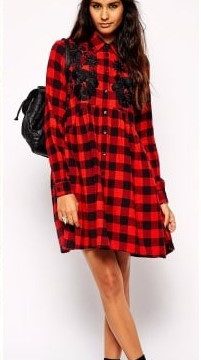 At this point, the shirt dress was still floundering in obscurity, following its fall in the 1980s. But the 1990s saw it start to rise again, championed largely by one distinct style; Grunge. Typically worn by under-25s, the shirt dress was accessorized with chunky Doc Martin-esque boots, ripped tights and black eyeliner. The Emo Generation was born. Whilst this style is still seen around the halls of many schools, it isn’t in as wide-spread distribution now. Some things are best left in the past.
At this point, the shirt dress was still floundering in obscurity, following its fall in the 1980s. But the 1990s saw it start to rise again, championed largely by one distinct style; Grunge. Typically worn by under-25s, the shirt dress was accessorized with chunky Doc Martin-esque boots, ripped tights and black eyeliner. The Emo Generation was born. Whilst this style is still seen around the halls of many schools, it isn’t in as wide-spread distribution now. Some things are best left in the past.
2000s Style
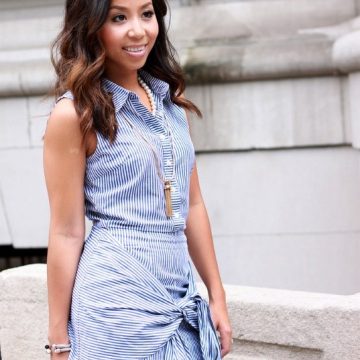 What a resurgence the shirt dress saw after the turn of the century. In the first issue of the new millennium, Gisele Bundchen wore a silk Versace shirt dress on the cover of British Vogue. As Justine Picardie, Editor-In-Chief of Harpers Bazaar noted, “If you’re sick of the boho vibe, take heart. Now is the time to look sleek, modern and powerful”. This was very much reflected in the shirtdress of the time. The look was much more tailored, with shorter and straighter skirts. These shirt dresses are still very much present today and can be worn as comfortably in an office environment, with a nice pair of wedges for lunch with friends, or with your favourite casual sandals heading to the beach. You can unbutton the bottom, and wear it over shorts, or wear it like a tunic over wide trousers and a beautiful belt. It’s versatility has been it’s saviour.
What a resurgence the shirt dress saw after the turn of the century. In the first issue of the new millennium, Gisele Bundchen wore a silk Versace shirt dress on the cover of British Vogue. As Justine Picardie, Editor-In-Chief of Harpers Bazaar noted, “If you’re sick of the boho vibe, take heart. Now is the time to look sleek, modern and powerful”. This was very much reflected in the shirtdress of the time. The look was much more tailored, with shorter and straighter skirts. These shirt dresses are still very much present today and can be worn as comfortably in an office environment, with a nice pair of wedges for lunch with friends, or with your favourite casual sandals heading to the beach. You can unbutton the bottom, and wear it over shorts, or wear it like a tunic over wide trousers and a beautiful belt. It’s versatility has been it’s saviour.
2010s Style
In the 2010s, it was like every shirt dress from the previous 5 decades were resurrected, with a few others thrown in for good measure. The tailored shirt dress of the early 2000s is still often seen, with the more flowy 1970s version also in a number of stores. With the rise of the maxi dress, the shirt dress became floaty again, and was longer than ever before. It also became a regular again on the catwalks, with many couture houses including the more flowy dress in their collections. The wrap shirt dress is also popular, versatile to the time of wearing, and also the figure of the person wearing it.
So, it’s fairly safe to say that the shirt dress has re-invented itself more times than Madonna. And like her, it has stood the test of time by being so many different things to different people. This is never more obvious than when completing a quick search on The Iconic; the self-titled “one stop shop for your wardrobe essentials” for all Australians, currently listing 673 items under “shirt dress”. And the best thing is that, no matter what style you choose, you can tailor each dress to your own shape using a Stop The Gape clip. Ooh, now how about we flash-mob shirt dress buying, and finally make it the style icon it is aspiring to be.
Till next time,
Stop The Gape

